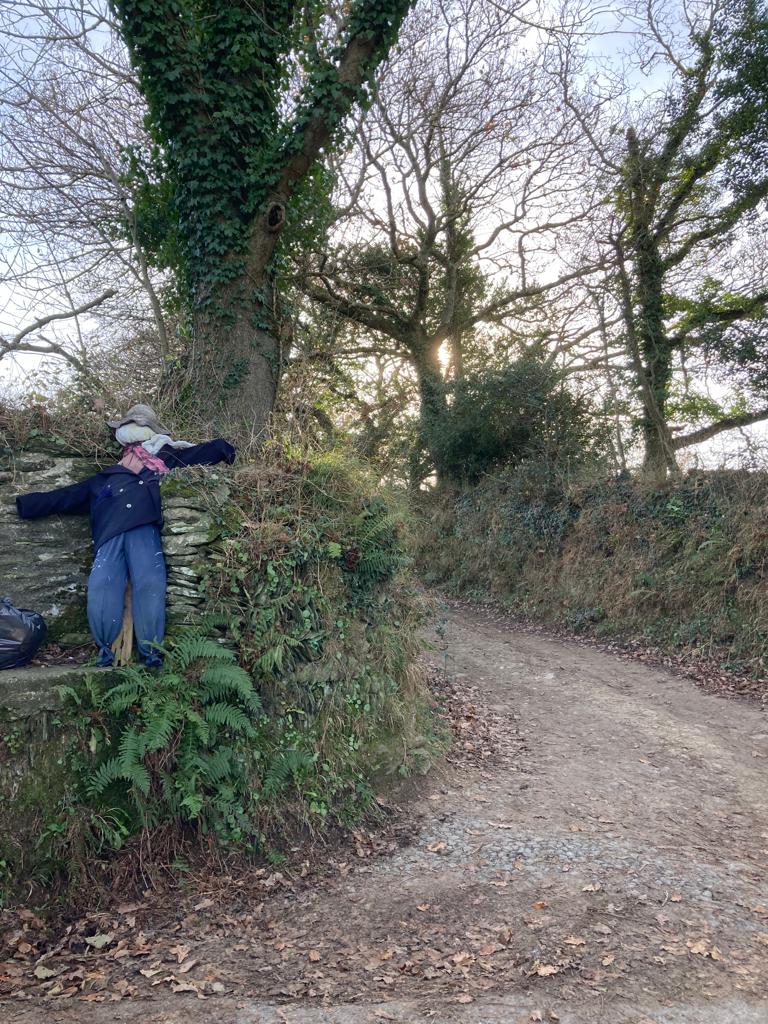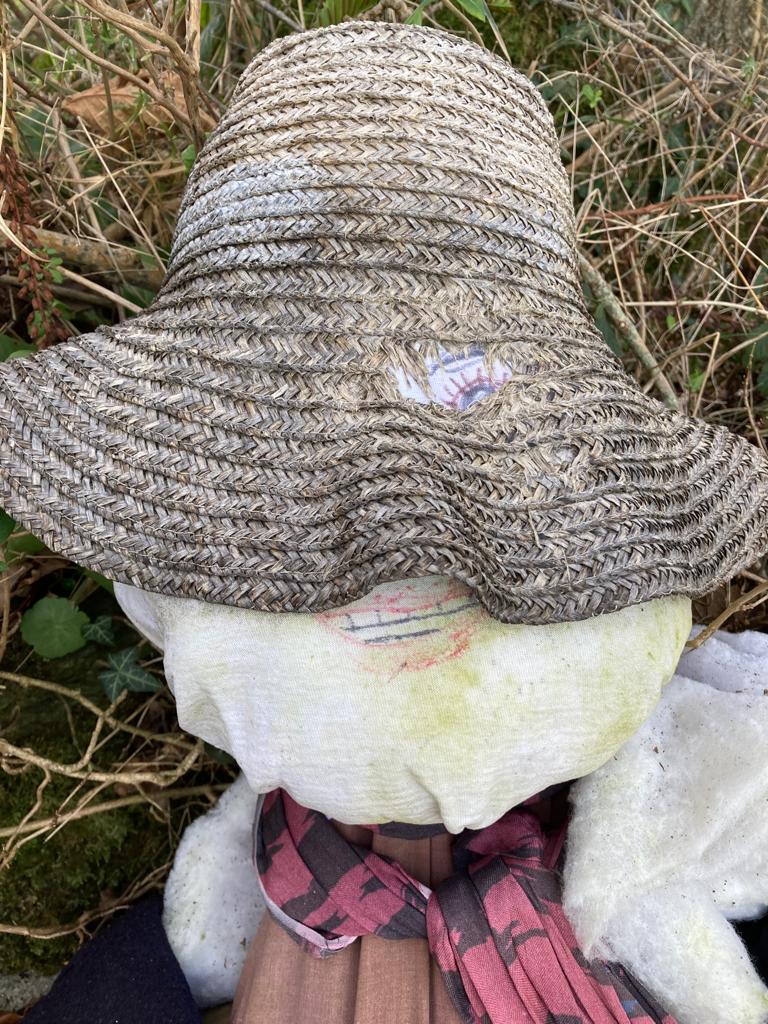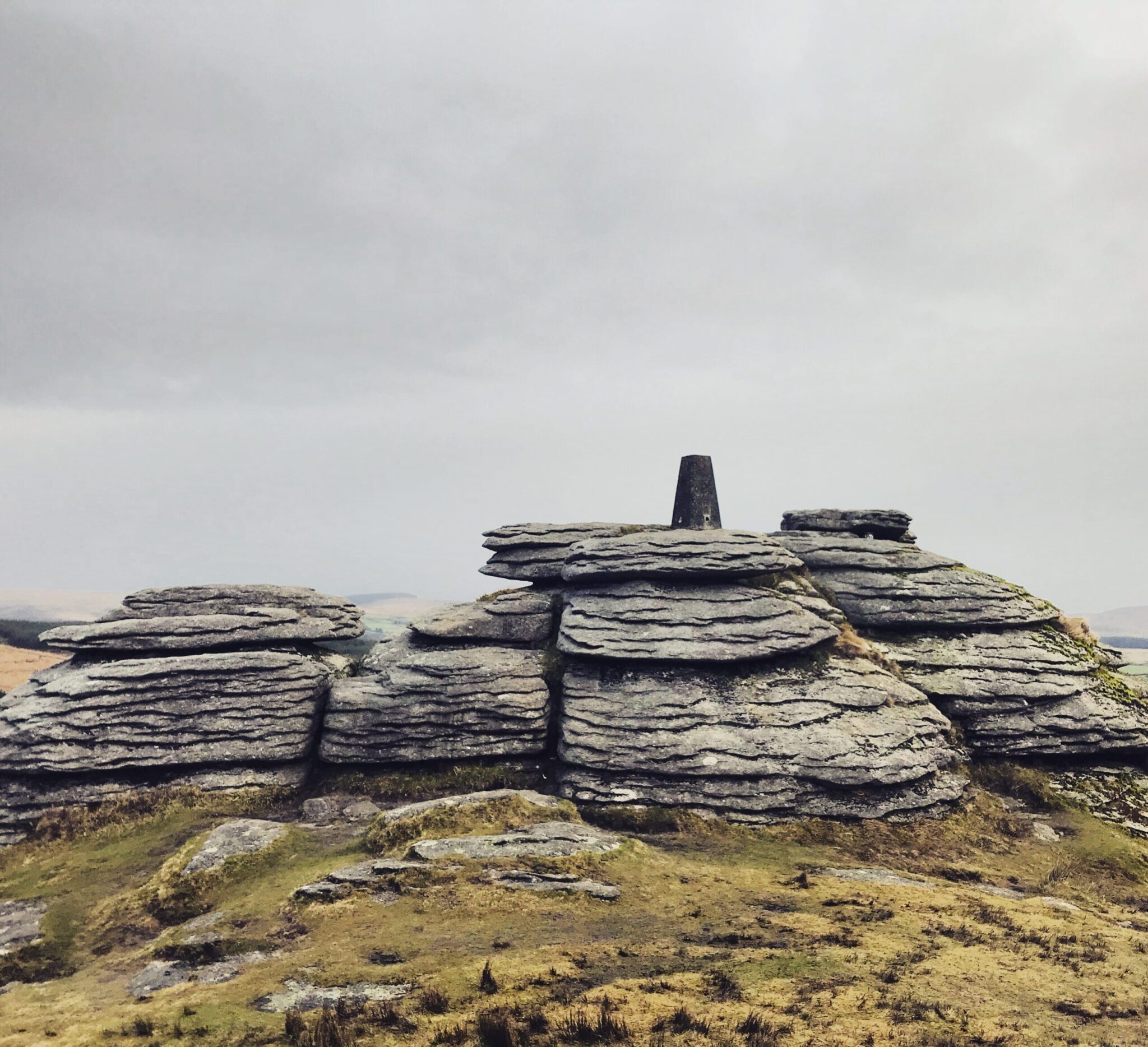
Earlier this month a man called Chris sent me a photo of a wire figure nailed to a tree so I immediately asked him for map co-ordinates of its precise location. He said it was in Barleysplat Wood, which is on the steep rocky apron of Bodmin Moor, about half an hour from where I live. It was a busy afternoon, with lots of phone calls to make, packages to pack, Christmas presents to buy and writing to write so I immediately dropped all of it and drove to the village of Warleggan, then walked down a steep bridleway in the direction of the wood, which lies about a mile south. It was a place where you could really feel that way that, in the memorable words of my friend Becky, “the innards are closer to the surface in Cornwall than they are in other counties.” If Cornwall has a split personality – its frivolous, expensively dressed margins and its tougher, disgruntled interior – then you feel, in December, in a place like Warleggan, like you might be witnessing the most ghostly and lonely aspect of that second, often overlooked Cornwall, and that to do so is a special but not at all comforting kind of treat. While I was there I had a mooch around the grounds of the church, whose late vicar, FW Densham, was such a troublesome character that he alienated his entire congregation then continued to preach to an empty building, placing cardboard cut-outs in the pews. It’s said his ghost is still seen wandering the surrounding sunken lanes, almost seven decades after his death, but I didn’t see him, and, despite a very thorough search, found no evidence of the wire man either. A couple of days later, because these things are mysteriously important to me, I returned and looked even harder, again with no joy. A farmer called Charles, coming down the bridleway from the village on his quad bike, told me the Wire Man was definitely still there, “’bout half a mile away, just before you get to the funny lookin’ ‘ows” but by the time I’d got back to the foot of the hill, there was no sign, just before I got to the funny lookin’ ‘ows or anywhere else.
People know I like scarecrows and sometimes they tell me about village scarecrow festivals, but I’m rarely into what I see there. It always feels a bit like when there’s a band you love and they make a really great and weird album directly from their hearts and then another band turns up, and they’re signed to a major label, and sound like a more hygienic version of the band you love, and have almost certainly received and taken on board lots of advice from well-paid people in offices, and someone says, “Listen to these guys. They’re totally your thing!” It doesn’t matter how “horror” someone attempts to make a scarecrow at a village scarecrow festival, they are never as genuinely spooky and alive, in a dead way, as the ones you stumble on during walks: those which have been made, very creatively, with a minimum of raw material, by farmers and other countryfolk. It’s perhaps specifically that limitation of resources which is directly responsible for the level of genius on display: the folk art equivalent of a poverty-stricken juvenile Seve Ballesteros teaching himself to play every golf shot imaginable with just an old three-iron and the pebbles on a Spanish beach. It was around 2009 when I first started getting very interested in the secret zombie lives of these very basic scarecrows, which, either coincidentally or uncoincidentally, was also a time when I was especially given to wearing old and threadbare clothes and first properly realised that bits of my body were beginning to fall apart and were likely to continue to do so for the remainder of my life. When I lived in Norfolk and regularly crossed the border for walks in the often-even-more-enchanting flatlands of Suffolk, I photographed dozens of them – vastly eclectic and inventive in their use of discarded coats and scarves and recycled agricultural containers – and it’s one of the things I miss about calling that part of the country home. Cornwall’s not quite such a rich hunting ground for the scarecrow enthusiast but I did find an impressively terrifying one guarding a bin bag at nightfall only a couple of miles from my house the other day: ambiguous gender, eyes partially hidden behind a ripped straw hat, biro-drawn teeth, stained (paint… spunk?) jogging bottoms. My phone died at the precise millisecond I tapped the button to photograph it and when I got home, the image wasn’t there, but I went back, as I always do in these situations, feeling even more compelled to do so after my disappointment vis-à-vis The Wire Man Of Barleysplat Wood. Second time around I got just the shot I wanted: several, in fact, as the pale Solstice sun lit the flecks of possible jism on the mawkin’s loungewear. I was talking recently with an acquaintance about potential epitaph, and I do not think “Never Less Than Tenacious In His Appreciation Of Strange Rural Mannequins” would be the most misleading, in my case.

You can read more about Scarecrows in my 2017 book 21st-Century Yokel.
Subscribe to my new newsletter and podcast at http://tomcox.substack.com
You can support the writing on this site as a paying subscriber or via a one-off donation via the homepage.


The biro mouth and eye looking through the hole in the hat are particularly sinister. The location leaves a lot of unanswered questions…